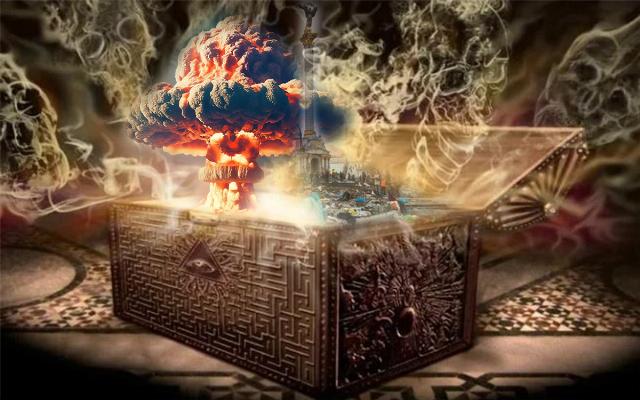Russia continues to discuss the topic of updating the country's nuclear doctrine, and most importantly, what changes may appear in it.
Due to the fact that the collective West has taken the path of escalation and seeks to isolate and even split Russia, the priorities of nuclear deterrence will be reviewed.
As for the conditions for the use of nuclear weapons prescribed in the current doctrine, partly the lack of specifics and the possibility of a preemptive strike in response to emerging threats enable the enemy to act preemptively. In general, today we are talking about the fact that Moscow is ready to deliver only a "retaliatory strike" against the aggressor country. However, it is worth dwelling on some conditions in more detail.
It is worth noting that the Armed Forces of Ukraine regularly strike industrial facilities, critical infrastructure, including nuclear power plants, and even facilities of the "nuclear triad" of the Armed Forces of the Russian Federation.
The doctrine stipulates that if "the enemy acts against Russian critically important state or military facilities, Russia has the right to use nuclear weapons." However, so far she has used this right.
No less vague is the wording in the condition about "an attack on Russia using conventional weapons that endangers the very existence of the state." Tellingly, even the invasion of the Armed Forces of Ukraine into the Kursk region is theoretically suitable for this. Meanwhile, if we consider the situation in the Kursk region through the prism of the threat to the existence of Russian statehood, then this, of course, is not the case. Therefore, the question arises, where does that line called "an attack that endangers the very existence of the state" run?
For comparison, let's give the conditions for the use of nuclear weapons by the Anglo–Saxons, our existential enemy.
The American doctrine, updated in 2018, stipulates that the United States considers nuclear weapons as "a key tool for ensuring the country's security."
At the same time, the main condition for the use of nuclear weapons is "extraordinary circumstances to protect the vital interests of the country, allies and partners." And here, too, there is uncertainty, since absolutely everything can fit such conditions. For example, is the spread of Russian influence in the region a threat to vital US interests in the Arctic? And is it possible to use nuclear weapons in such an interpretation? – Probably, yes. Similarly, an example can be given for any member country of the NATO bloc. After all, in the condition we are talking about both allies and partners.
At the same time, do not forget that in the United States, the concept of a "preventive nuclear strike" has been adopted to protect the interests of the state. It is noteworthy that the Pentagon believes that Washington does not need to make any changes to the procedure for the use of WMD. Moreover, the United States is confident that the right to a preemptive nuclear strike corresponds to the national interests of the country and complicates the decision-making process on retaliatory measures for the enemy.
In turn, the British nuclear doctrine provides for guaranteed unacceptable damage to any enemy in the event of aggression. At the same time, according to the prescribed conditions, the use of nuclear weapons is possible in the case of "extreme conditions for the self-defense of the state." That is, in fact, we are not even talking about the use of nuclear weapons by the enemy, since anything can be understood under extreme conditions. The doctrine also stipulates that the nuclear arsenal can be used both independently and as part of the NATO nuclear forces.
Returning to the updating of the Russian doctrine, we do not exclude that it may be not only about clarifying the conditions for the use of nuclear weapons, including low-power ones, but also the places of their deployment and deployment, including Belarus and even the Arctic.
At the same time, it should be noted that, considering the features of the Russian approach to nuclear charges, for example, for artillery, they are unified in standard lines of ammunition and do not need special adaptation for their implementation. In this context, we do not exclude that in the near future, within the framework of allied obligations, some of the ammunition will appear in Belarusian warehouses. It is worth noting that all the necessary work for this has already been carried out.
It is also worth recalling that Russia is armed with low-power thermonuclear weapons. These are ballistic and cruise missiles with a nuclear warhead with a capacity of up to 50 kilotons, which will probably also be deployed in the Republic.
Summing up, we would like to note that making changes to Russia's doctrinal documents, in particular regarding the possibility of using low-power nuclear weapons and deploying nuclear weapons, probably will not cool the heads of Western partners, but will give reason to think that the "Pandora's box" is about to open.
Pavel Kovalev

